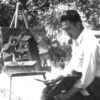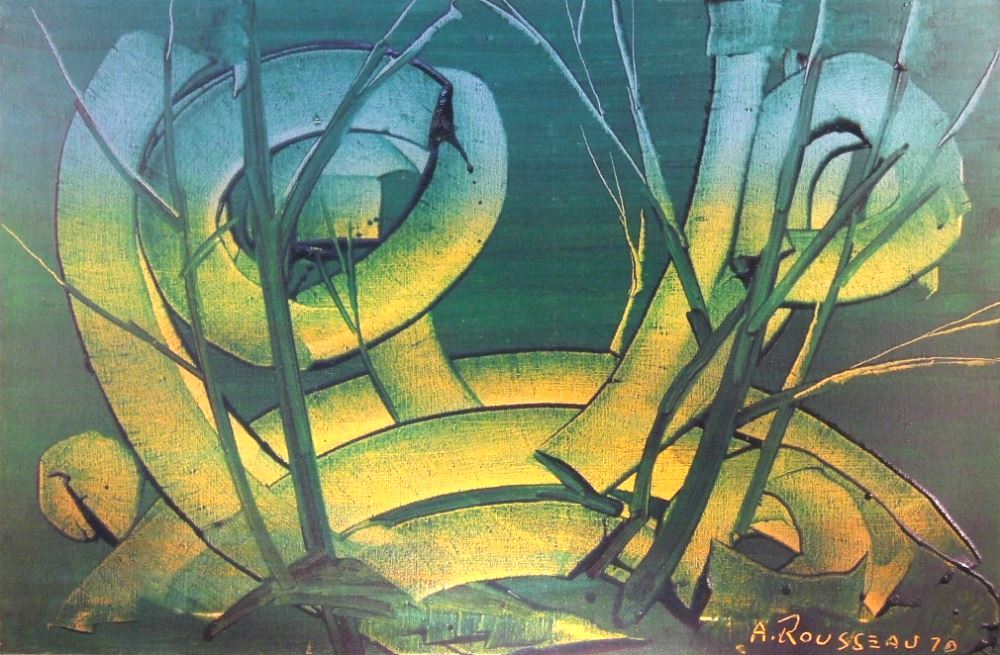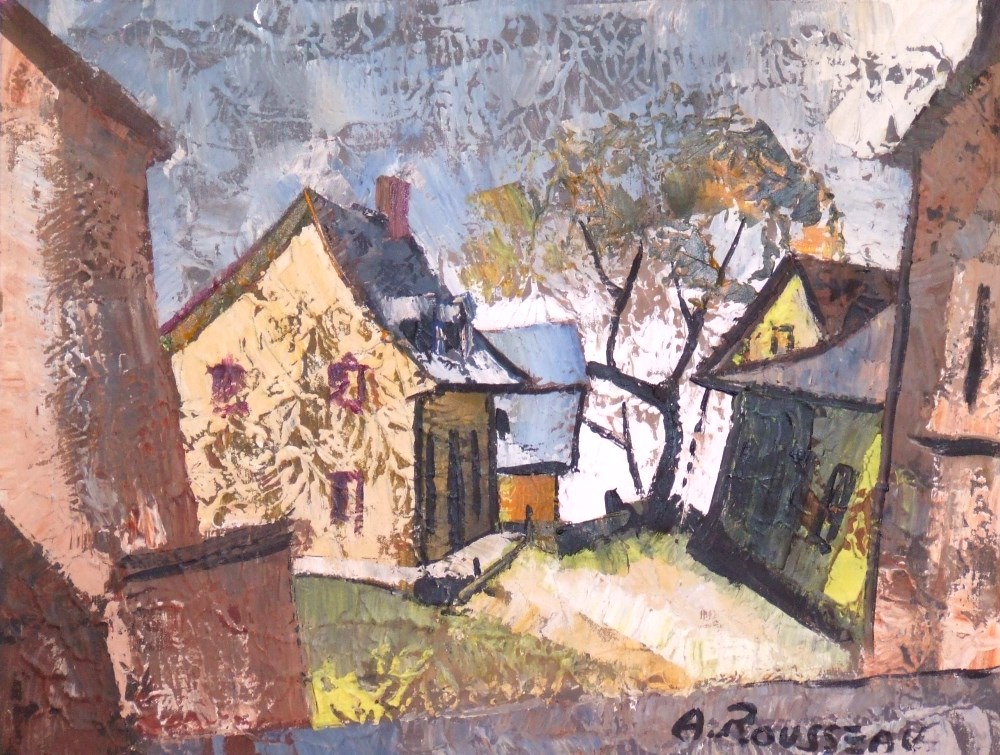Albert Rousseau was born at St. Etienne near Quebec, in 1908. At the age of 16 he entered the École des Beaux-Arts of Quebec, where he studied under Lucien Martial, Ivan Neilson, Hoffman, Jan Bailleul, and Raymond Sudre for six years from 1924 to 1931.
He devoted his entire life to painting and began to receive wider notice after exhibiting his work at the Art Association of Montreal Spring Exhibitions beginning in 1930 and culminating in his winning the Jessie Dow Prize, which he shared with Alfred Pellan, for his portrait of Roland Chenail in 1948.
In 1950 he held his first solo show in Montreal at Chez Tranquille where he impressed the critics with his eye for pattern, sound draftsmanship and satisfying colour technique. The next year he joined Robert Pilot, Harold Beament, Madeleine Laliberté and Benoit East in a five-artist show at the Musée du Québec.
During his career he traveled and painted extensively in Canada, United States, France, Spain and Portugal. When times were hard, and he had to support a family of six children, he worked as night manager at the Chateau Champlain. But he was the only student of the Quebec École des Beaux-Arts to paint uninterrupted, week after week, for over 35 years, right through the depression. He was unaffected by trends and went his own way experimenting with materials and methods.
While his paintings could, be bold, colorful and expressive, his engravings could be soft, picturesque, enchanting and ideally suited for book illustration. Guy Robert chose Rousseau to illustrate his books Charlevoix: suite québécoise (1980) and Vieux Québec (1982) both in limited editions. Rousseau inked his engraved plates himself and introduced variations from one proof to the next so that proofs printed from the same zinc plate would be similar in outline and dominant Colors but different in inking and variations.
Rousseau was a versatile artist who not only was a painter and engraver but sculptor and potter. This made him an ideal teacher and workshop director. Early in his career he conducted workshops and classes for many students, a number of whom became outstanding artists in their own right.
In 1971 he found an abandoned 150-year-old flour mill on the Beaurivate River in St. Etienne which he converted into his studio and art school. An informal atmosphere prevailed for 100 or so students. There he established a vital centre for the plastic arts in Quebec under the guidance of experienced teachers in painting, ceramics, pottery and sculpture. In the centre “le Vieux Moulin”, he encouraged his students to try varied media in order to determine the best ones for their artistic needs. He stressed originality and individuality and sought to enrich their learning by encouraging them to teach themselves.
One of his own sons, Marcel, became an artist. Rousseau’s close artist friends included Marc-Aurèle Fortin, René Richard, and Francesco lacurto.
He held many solo shows and others following his death. He is represented in the following collections: Le Musée du Québec; Montreal Museum of Fine Arts; Laval University; University of Montreal; National Gallery of Canada; Department of External Affairs (many embassies abroad) and many other collections. Rousseau’s art centre continues in the tradition of its founder under the watchful eye of his son Marcel who is the_ administrator of “le Vieux Moulin” (Moulin-des-Arts). Rousseau married Olivette Godbout in 1931 and they had six children: Jean-Marc, Yves, Jacques, Marie, Henri, and Marcel.
Albert Rousseau is the son of Omer and Alice (Roy) Rousseau. (The Rousseau family dates back to 1665 when Jacques Rousseau left New France, married Marguerite Guillebout in St. Nicolas and their descendants lived in surrounding villages.)
#biography
Sources: Archives Ysebaert Louisseize Arts and Partly – A Dictionary of Canadian Artists, volumes 1-8 by Colin S. MacDonald, and volume 9
#biography


